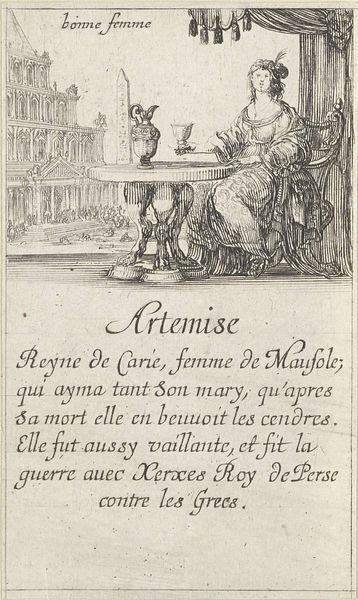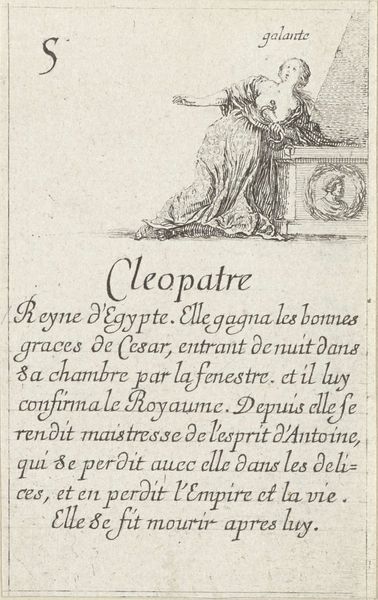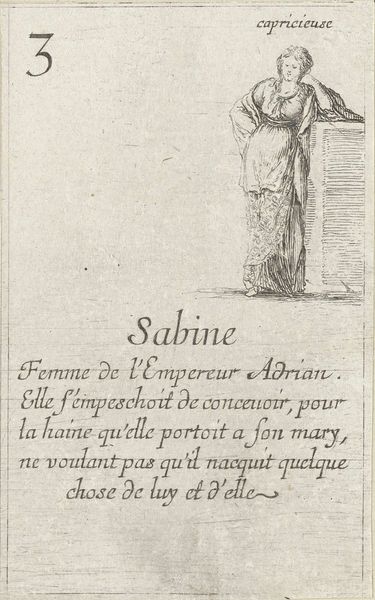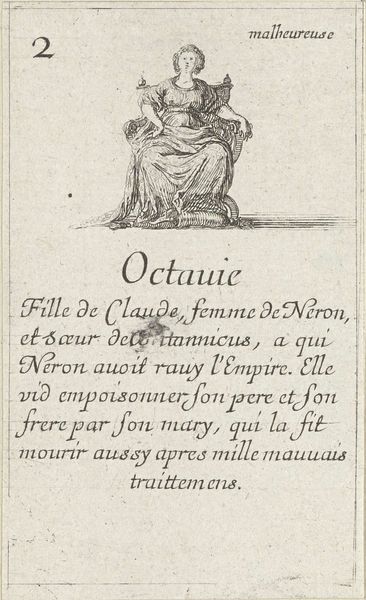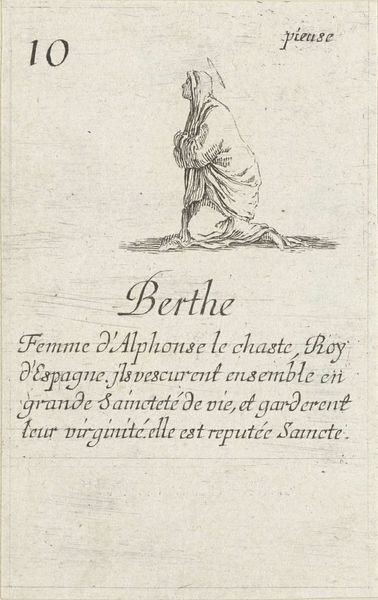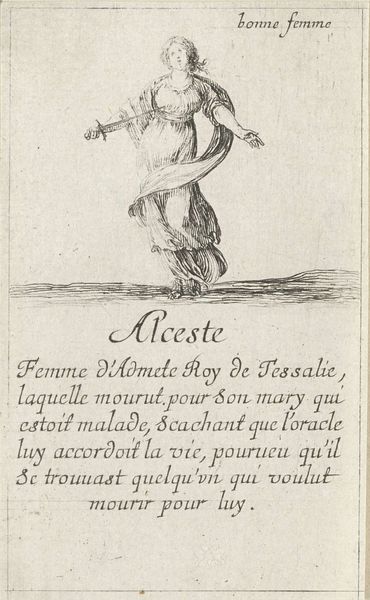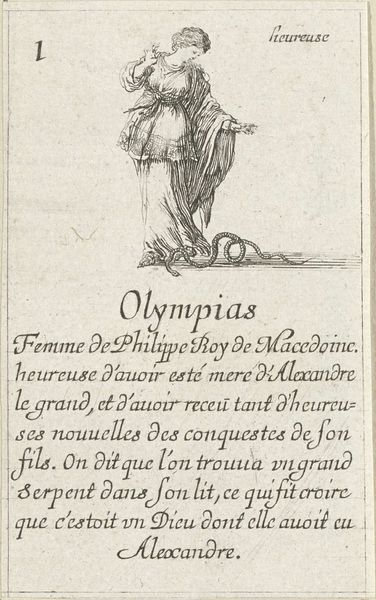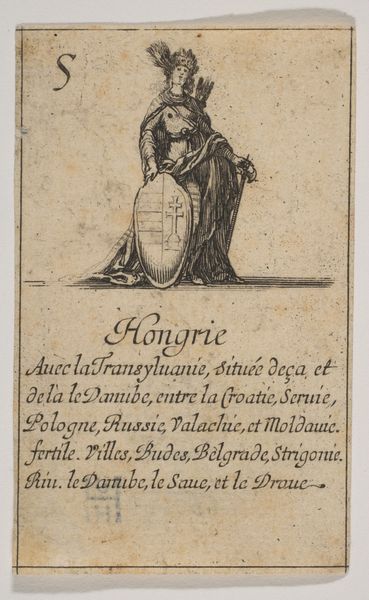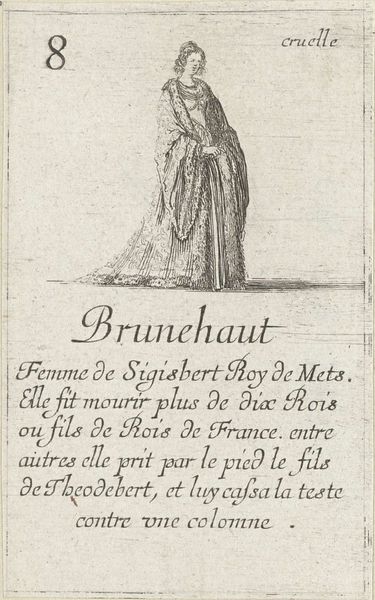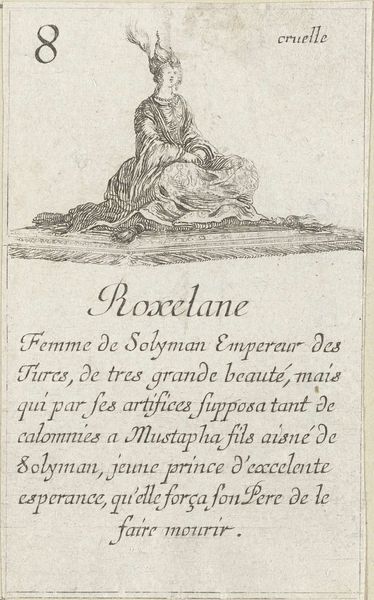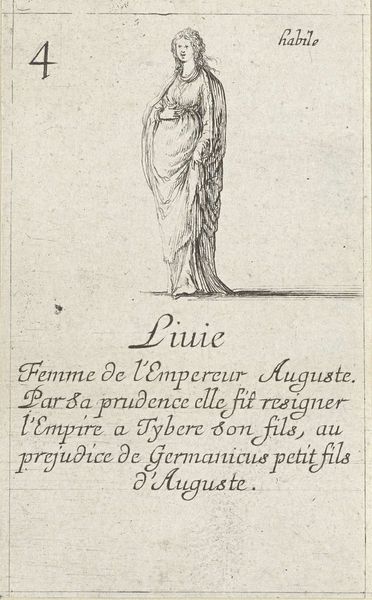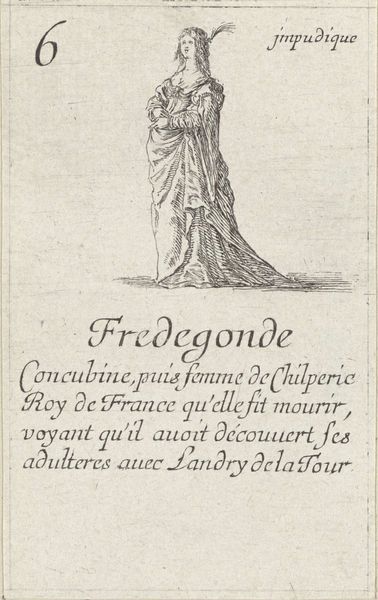
print, engraving
#
portrait
#
baroque
# print
#
figuration
#
history-painting
#
engraving
Dimensions: height 90 mm, width 55 mm
Copyright: Rijks Museum: Open Domain
Editor: Here we have Stefano della Bella’s “Hekabe,” made sometime between 1620 and 1664. It’s an engraving, currently held in the Rijksmuseum. The figure seems so still, posed against the inscription. How do you interpret this work? Curator: This image of Hecuba, Queen of Troy, isn't simply a portrait but a potent symbol of grief and resilience. See how she's perched atop that ornate pedestal, almost like a monument. Consider what that pedestal signifies—status, remembrance. Yet, she is 'malheureuse' –unhappy, as inscribed above, revealing a sharp dissonance. Editor: So the pedestal acts as a kind of ironic commentary? Curator: Precisely. Della Bella uses this visual contrast to highlight Hecuba's tragic fate. She’s a queen brought low, a mother who has lost everything. Notice the downcast gaze, the way her fingers intertwine. These are visual cues signaling profound sorrow. Does the pose remind you of any traditional figures? Editor: Now that you mention it, the pose resembles a melancholic muse, common in Renaissance and Baroque art. Curator: Indeed. Della Bella subtly connects Hecuba’s personal tragedy with enduring themes of loss and memory in Western culture. Her story serves as a cautionary tale, but also a testament to the strength of the human spirit in the face of unimaginable adversity. We recognize a certain tragic heroism in her stance. Editor: That's fascinating, how the image holds both personal sorrow and a broader cultural memory. Curator: These visual symbols continue to resonate, reminding us of the lasting power of storytelling.
Comments
No comments
Be the first to comment and join the conversation on the ultimate creative platform.
